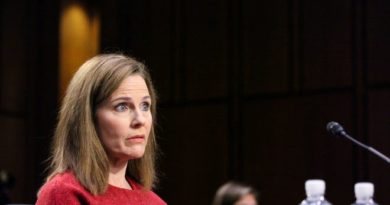How QAnon is spreading during the pandemic — and more lessons on fake news

The material comes from the project’s newsletter, the Sift, which takes the most recent viral rumors, conspiracy theories, hoaxes and journalistic ethics issues and turns them into timely lessons with discussion prompts and links. The Sift, which is published weekly during the school year, has more than 10,000 subscribers, most of them educators.
The News Literacy Project also offers a program called Checkology, a browser-based platform designed for students in grades 6 through 12 that helps prepare the next generation to easily identify misinformation. Now, during the coronavirus pandemic, the project is offering access to Checkology Premium at no cost to educators and parents in the United States. More than 1,100 educators and parents in 49 states and D.C. have registered to use the platform with as many as 90,000 students.
You can learn more about the News Literacy Project and all of the educational resources it provides in this piece, but here is a rundown:
Founded more than a decade ago by Alan Miller, a Pulitzer Prize-winning reporter at the Los Angeles Times, the News Literacy Project is the leading provider of news literacy education.
It creates digital curriculums and other resources, and works with educators and journalists to teach middle school and high school students how to recognize news and information to trust — and provides them with the tools they need to be informed and engaged participants in a democracy. It uses the standards of high-quality journalism as an aspirational yardstick against which to measure all news and information. Just as important, it provides the next generation with an appreciation of the First Amendment and the role of a free press.
Today’s lesson involves the QAnon phenomenon, which was described this way in a news literacy post in May:
At its heart is the baseless notion that President Trump is secretly working to bring about a “Great Awakening” to expose an elite cabal of child sex abusers — including prominent political figures in Washington — that has been concealed by intelligence agencies, or “the deep state.”
In many ways, QAnon is a quintessential conspiracy theory: It offers its adherents simple explanations in place of complexity, a coherent entity on which to place blame for the transgressions of modern life, and a sense of control and populist purpose.
But in other ways, it seems to have tapped into deeper veins of moral gratification: an apocalyptic vision of a renewed America that resonates deeply with evangelical Christian beliefs about the End Times. (Indeed, at least one church has been founded on QAnon belief principles.)
And here are news literacy lessons from this week’s Sift:
QAnon outbreak?
When people stay in their homes instead of gathering in crowded public spaces, it clearly works to stop the spread of the coronavirus. But spending more time in isolation, and online, might also be exposing people to a different kind of threat.
QAnon’s sprawling system of conspiratorial beliefs — which started on the fringes of the Internet almost three years ago — has morphed and expanded over time, incorporating recent events, drawing in other conspiracy communities and offering easy explanations to people searching for answers during an uncertain time. Social media content related to QAnon has increased significantly since March, has permeated mainstream political discourse online and has actively shaped some voting preferences for the upcoming election.
Those close to people who have become consumed by the QAnon delusion describe a cultlike obsession with the conspiracy theories and a refusal to question their legitimacy. Jane Lytvynenko of BuzzFeed News gathered 200 such stories for a Sept. 18 report that illustrates how deeply QAnon beliefs can take hold and underscores the role that the pandemic has played in driving people to spend more time online. It is tempting to consider the 53% of Americans who told Pew that they have read or heard “nothing at all” about QAnon as a positive sign.
But a total lack of familiarity with the movement may leave people vulnerable to becoming ensnared by it. Social media is littered with the idioms, themes and assumptions of QAnon — references to the “deep state,” hints that COVID-19 is planned, seemingly noble posts condemning child trafficking and abuse — and social media companies appear unable, or unwilling, to contain it. Facebook made a concerted effort last month to crack down on private QAnon groups, but even after it took action, new groups quickly formed to take their place. Followers of the conspiracy also join other groups on the platform and flood those conversations with QAnon content, some of which gets shared by people who don’t recognize it as such.
If these seemingly innocuous fragments of conspiratorial narratives become widespread enough, they just might lay the groundwork for a full-blown outbreak.
Discuss: Why do you think some people are drawn to the QAnon movement? In what ways are conspiratorial beliefs similar to religious beliefs? In what ways are they different? How do people maintain such unassailable beliefs in conspiracy theories in the face of contradicting facts and evidence?
Sift Picks
Discuss: Assign the film and challenge students to reflect on the ways algorithms shape what they see online. How often do they click content recommended by sites like YouTube, Facebook, Instagram and TikTok? Should this data be collected in an effort to train algorithms to keep users engaged on these platforms? How could these personalization algorithms create different realities online and drive polarization?
*** This article has been archived for your research. The original version from The Washington Post can be found here ***


